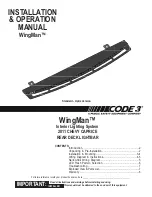
4-17
Environmental Concerns
Off
-
road driving can provide wholesome and satisfying
recreation. However, it also raises environmental
concerns. Oldsmobile recognizes these concerns and
urges every off
-
roader to follow these basic rules for
protecting the environment:
D Always use established trails, roads and areas that
have been specially set aside for public off
-
road
recreational driving; obey all posted regulations.
D Avoid any driving practice that could damage the
environment
--
shrubs, flowers, trees, grasses
--
or
disturb wildlife (this includes wheel
-
spinning,
breaking down trees or unnecessary driving through
streams or over soft ground).
D Always carry a litter bag . . . make sure all refuse is
removed from any campsite before leaving.
D Take extreme care with open fires (where permitted),
camp stoves and lanterns.
D Never park your vehicle over dry grass or other
combustible materials that could catch fire from the
heat of the vehicle’s exhaust system.
Traveling to Remote Areas
It makes sense to plan your trip, especially when going
to a remote area. Know the terrain and plan your route.
You are much less likely to get bad surprises. Get
accurate maps of trails and terrain. Try to learn of any
blocked or closed roads.
It’s also a good idea to travel with at least one other
vehicle. If something happens to one of them, the other
can help quickly.
Getting Familiar with Off-Road Driving
It’s a good idea to practice in an area that’s safe and
close to home before you go into the wilderness.
Off
-
road driving does require some new and different
driving skills. Here’s what we mean.
Tune your senses to different kinds of signals. Your
eyes, for example, need to constantly sweep the terrain
for unexpected obstacles. Your ears need to listen for
unusual tire or engine sounds. With your arms, hands,
feet and body, you’ll need to respond to vibrations and
vehicle bounce.
















































